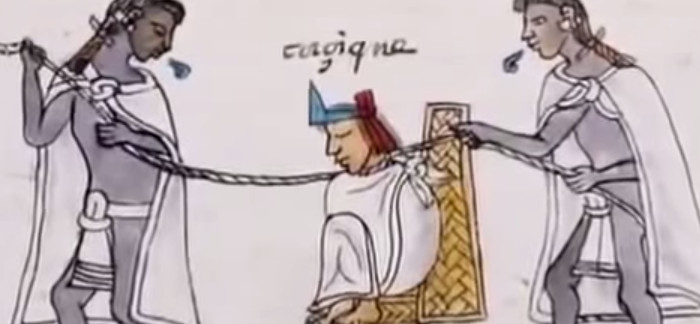Located in Central Mexico, the Aztec people had one of the most extensive cultures in North America during the European colonization era. They dominated their region between the 14th and 16th centuries, leaving many relics in their wake that are still studied today. Many see the Aztec people as being barbaric and warlike, which is true, but these six important facts about the Aztecs might shine some light on who they were as a culture a little more brightly.
1. They were extremely creative
The Aztec people loved to sculpt and create pottery. We also have records of several artistic drawings that were rendered during the height of their era. It is believed that many of these works of art were also designed to be applied to their warriors as tattoos in order to honor them for specific accomplishments. They also invented a number of sporting games that were regularly played and some of those games are still played today.
2. They emphasized education
The Aztecs were one of the first North American cultures to mandate public schooling for children. Although the different classes in their culture had different schools, every child had the chance to learn and change their stars. In addition to reading and writing, children were also taught vocational skills that could help them survive later on in life.
3. They were not defeated by war
When the Spanish first encountered the Aztec civilization, they were defeated. Additional incursions into the Aztec lands also looked to be detrimental to the colonization cause. If it weren’t for the spread of smallpox, a disease that the Aztecs had not encountered yet and so had no immunities to, this culture might still be thriving today.
4. They had an extensive record keeping system
The written language of the Aztecs is very hieroglyphic in nature. They learned early on that knowledge came from being able to write things down so that others could learn from that information. Without paper available to them, they used deer skins or the back of tree bark to keep tax records, documentation of religious sacrifices, or even books of poetry.
5. Slavery was a major component of their culture
It was not uncommon for the poor class to sell their children to the wealthy class because they had no money in Aztec society. Slavery wasn’t seen as a necessarily bad thing, however, because many Aztecs would actually sell themselves into slavery as well. The idea was that the money could be used for business purposes so that enough profits could be generated that freedom could be purchased later on down the road.
6. Human sacrifices might not have been religiously motivated
In looking at the region where the Aztecs lived and what foods were available to them, some historians have come to the belief that their cultural practice of human sacrifice might have been due to protein deficiencies more than a religious need. The people who were sacrificed were often eaten and it is estimated that about 20,000 people were killed annually to meet this need.
7. Disease Was The Demise
The Aztec people where brilliant in war and military strategy however there biggest downfall was succumbing to disease. Smallpox ravaged the population of the Aztecs when the Spaniards began to attack. Many claim that the Spaniards out witted the Aztecs when in reality their retreat was due to the harm that the European disease did to the Aztec people.
8. Record Keeping Was A Strong Point
The Aztec people had an impressively advanced method of keeping records. Using their own language, N’ahuatl, they developed a picture alphabet that was used to document major events. The records where made on bark and deer skin using charcoal. They then colored the documents with vegetables and herbs. The intensive records they kept included sacrifices, tax records, poetry, and historical records.
The Aztec culture is one of the most comprehensive early cultures that North America saw. By learning these facts about this culture, we can come to a better understanding of who they were and what they hoped to accomplish.




